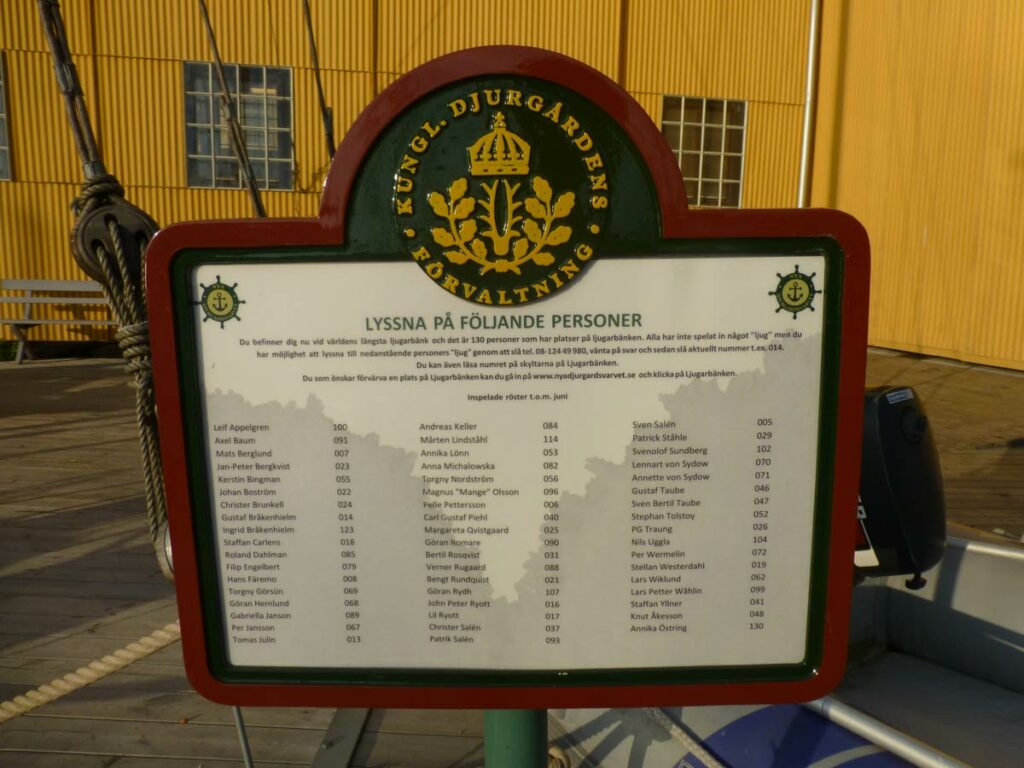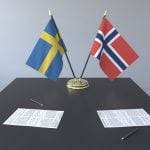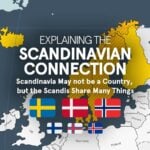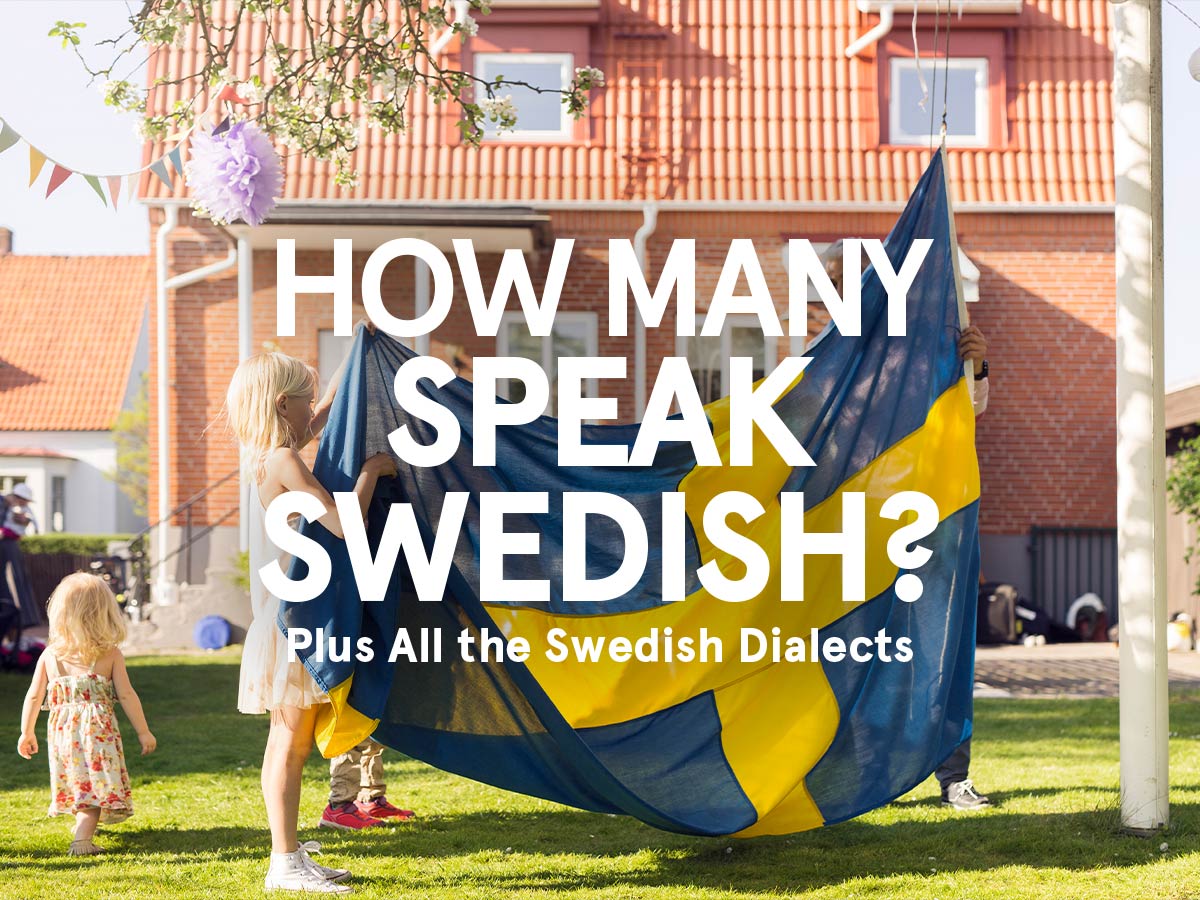You probably know that Sweden isn’t a very common language in the rest of the world, but do you know how many people actually speak Swedish and its’ different dialects?
If you’d like to find out, I’ve gathered all the latest data on how many speakers of Swedish and all of the Swedish dialects there currently are. Let’s dive right in!
How Many People Speak Swedish in the World?
Around 10.85 million people around the world speak Swedish as their first language as of March 2022, with almost all of them (10.45 million) living in Sweden and the others scattered around in Finland (263 000), USA (76 000), Åland (26 000), Canada (17 000), and Estonia (13 990). This makes Swedish one of the 100 most spoken languages in the world.
| Country | Native Swedish Speakers |
|---|---|
| Sweden | 10 449 381 |
| Finland | 263 000 |
| USA | 76 000 |
| Åland | 26 000 |
| Canada | 17 000 |
| Estonia | 13 990 |
| Total Swedish Speakers | 10 845 371 |
In addition to the above, there is an estimated 26 000 people studying Swedish around the world, primarily in Germany.
How Many People Speak Swedish in Sweden?
There are an estimated 10.45 million people who speak Swedish in Sweden, as of March 2022.

How Many Swedish Dialects are There?
There are six main dialect categories within the Swedish language, each containing more specific regional variations:
Gotland dialects (Gutnish or Gutemål):
Number of speakers: 60 001
Gotland, an island located off the east coast of Sweden, has its own dialects that are unique from the rest of Sweden. The dialects on Gotland stem from Old Gutnish, while Swedish primarily stems from Old East Norse.
Götaland dialects (Geatish or Götamål)
Number of speakers: 2 985 559
The Götaland dialects are spoken in the western parts of the country, and include Götamål (Geatish), Göteborgska (Gothenburg dialect), Bohuslänska (Bohuslan dialect), and Mellansvenska (Middle Swedish).
Norrland dialects
Number of speakers: 1 185 781
Norrland dialects are spoken in the northern parts of Sweden. There are several different dialects that are spoken in Norrland, and they all have their own unique features. Varieties include Norrbottensmål, Västerbottniska, Nybyggarmål, Ångermanländska, Jämtmål, Medelpadsmål
Svealand dialects
Number of speakers: 4 232 319
Svealand dialects are spoken in the eastern parts of Sweden. Uppland is the center of the Sveamål dialects, and the Svea area can be divided into four different sub-groups: Uppsvenska, Bergslagsmål, Mellansvenska, and Dalmål.

South-Swedish dialects (Skånemål/Scanian, Halländska, Blekingemål, Sydsmåländska)
Number of speakers: 1 402 425 (Scanian), 340 243 (Halländska), 158 937 (Blekingska)
The Scanian dialects are spoken in the southern parts of Sweden, and are usually split into three groups: Skånska, Blekingska, and Halländska. Skånska is spoken in the region of Scania, Belkingska in Blekinge, and Halländska in the region of Halland.
East-Swedish dialects (Finland & Estonia)
There are a few different Swedish dialects spoken in Finland and Estonia. The Finnish dialects are spoken in the western parts of Finland, while the Estonian dialects are slowly dying as most Swedish-speakers left Estonia during the second world war.
How Many Languages are Spoken in Sweden?
Swedish is the primary and most popular language spoken in Sweden, with around 97% of the population speaking it either as their first or second language.
Sweden also has numerous minority languages that are considered national languages: Finnish, Sami, Meänkieli, Yiddish, and Romani as minority national languages in Sweden. They have been spoken for so long in Sweden that they are considered part of the Swedish cultural heritage at this point.
In all, there are an estimated 200 languages spoken by minorities in Sweden, including English, German, Arabic, Polish, Spanish, Kurdish, Somali, Danish, and Norwegian.
This rich linguistic diversity is a reflection of Sweden’s recent immigration policies which have brought people from all over the world to live in Sweden.

Is Swedish a Dying Language?
There are currently around 10.85 million people in the world who speak Swedish as their first language, so it’s fair to say that Swedish is still a fairly common language. Swedish is mutually intelligible to Danish and Norwegian (at least in written form), and also the most commonly spoken North Germanic language.
Out of all European languages, Swedish is the 14th-most spoken language, just behind Greek.
It should be noted that the Nordic region as a whole is seeing increasing use of English as a common language instead of learning each other’s Nordic languages properly.
This is following the global trend of embracing English as a lingua franca of the world (a global means of inter-community communication), but does not mean that the Swedish, Danish or Norwegian languages are going anywhere.
Sources:
https://www.isof.se/lar-dig-mer/kunskapsbanker/lar-dig-mer-om-svenska-spraket/
https://data.worldbank.org/indicator/SP.POP.TOTL
http://www2.nordiska.uu.se/konferens/svebe36/sammandrag/allardtljunggren/
 Should I Learn Swedish or Norwegian? (Answered with Data & Graphs)
Should I Learn Swedish or Norwegian? (Answered with Data & Graphs) Nordic and Scandinavian Languages Explained and Ranked
Nordic and Scandinavian Languages Explained and Ranked How Nordic People Understand & Talk To Each Other (+ Graphs)
How Nordic People Understand & Talk To Each Other (+ Graphs) Is Scandinavia a Country? The Scandinavian Connection Explained
Is Scandinavia a Country? The Scandinavian Connection Explained

